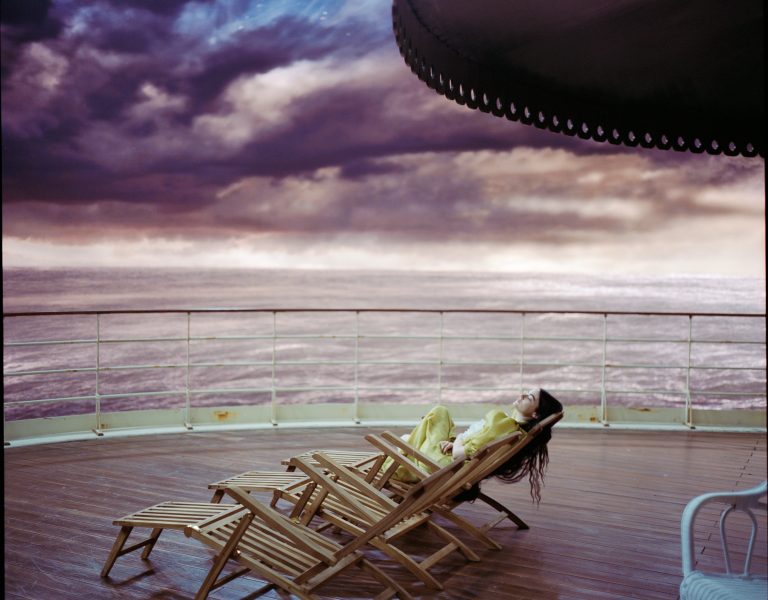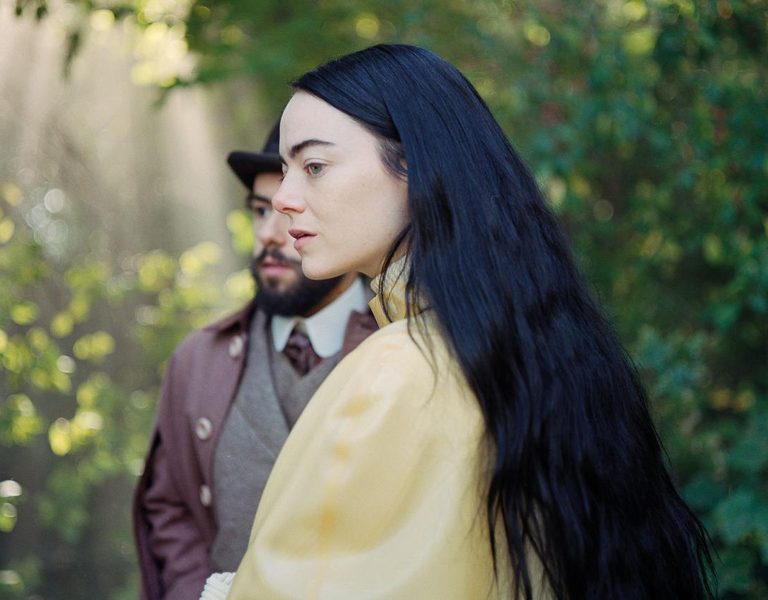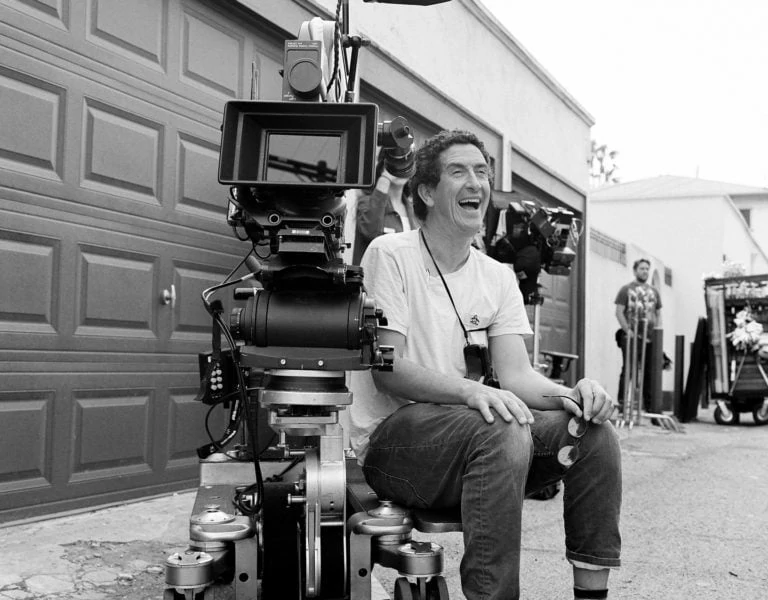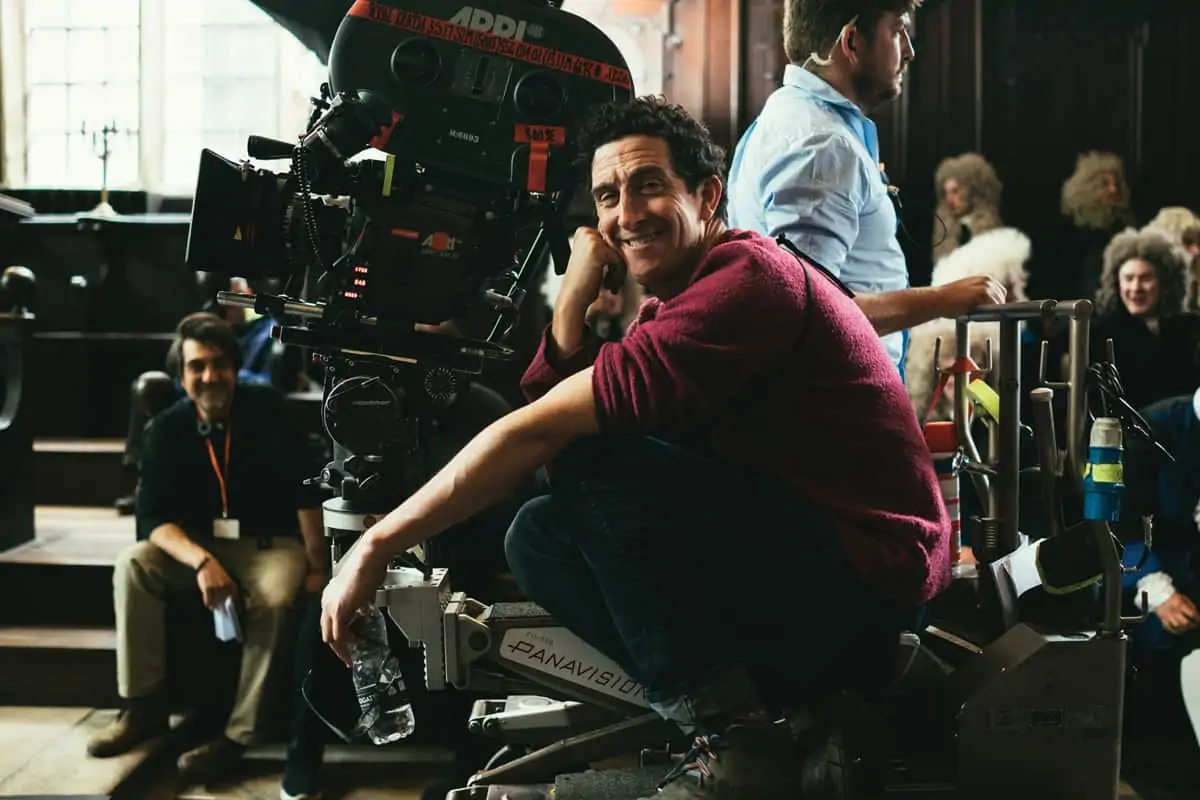THREE OF A KIND
Shooting a multi-story narrative consecutively and maintaining a consistent visual style was at the centre of Robbie Ryan BSC ISC’s process when crafting triptych tale Kinds of Kindness alongside Yorgos Lanthimos.
Like many successful production pairings, a merging of complementary creative and technical strengths helps Robbie Ryan BSC ISC and writer-director Yorgos Lanthimos bring unique stories to the screen. “I’m the facilitator, he’s the creator,” says Ryan about the process of working with his repeat collaborator. “Yorgos thinks it all up and is very much in the driving seat when it comes to ideas. The whole filmmaking process with him is exciting.”
Fresh from the victory of Poor Things – which received BAFTA, Oscar and ASC cinematography nominations and cinematography wins at the BSC and Irish Film and Television Awards – the pair has united once again to bring triptych tale Kinds of Kindness to audiences.
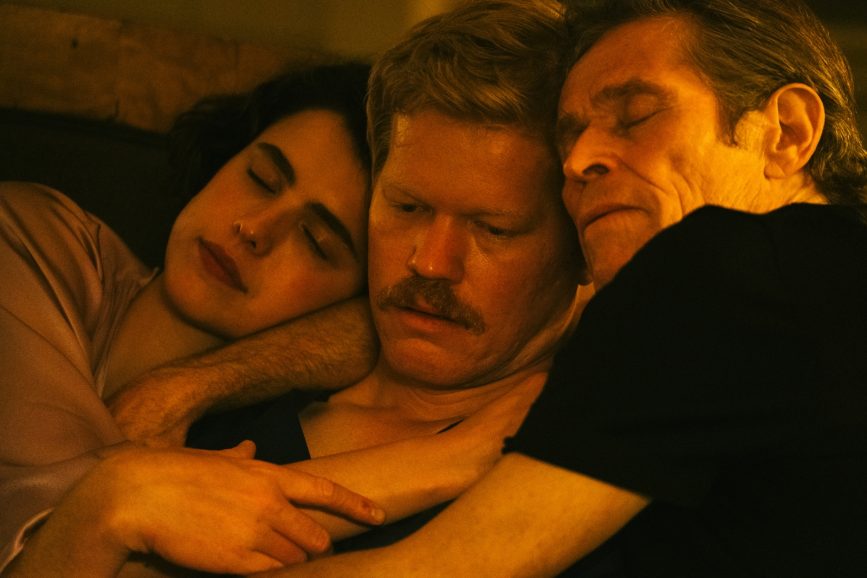
Themes of power, control, free will, and the dynamics of human relationships flow through the three-story narrative with the first fable introducing a man without choice who tries to take control of his life. A policeman whose wife returns a changed character after going missing at sea is at the centre of the second story before the film concludes with the third tale about a woman searching for someone with a special ability.
The idea for Kinds of Kindness – which Lanthimos co-wrote with Efthimis Filippou – took on multiple narrative forms over the years before evolving into an anthology. “We had started out with one story, but as we were working on it, we thought that it might be interesting to make a film that has a different structure to what we had done before,” explains Lanthimos. “As we identified the subsequent stories, we wanted to keep a thematic thread, so it felt as if it all belonged under the same umbrella.”
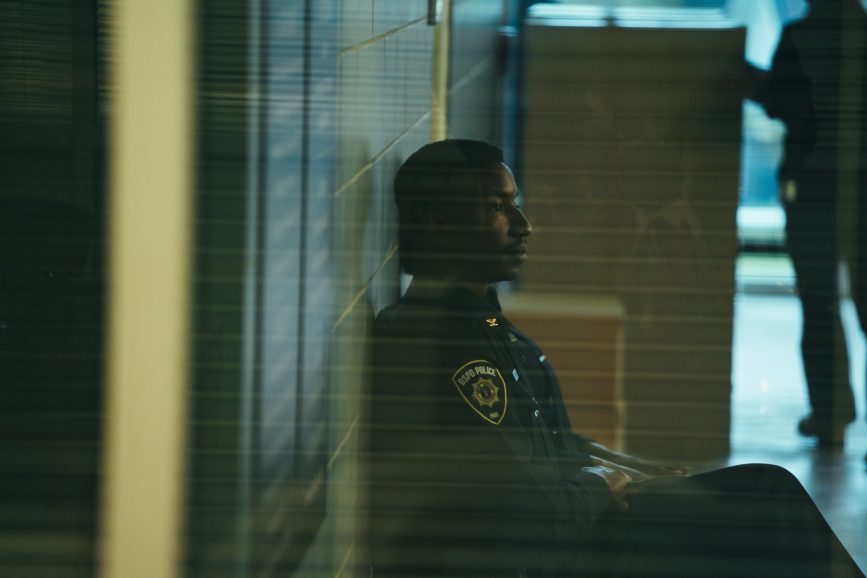
Lanthimos had the idea that the same actors should play a different character in each story, to build a sense of familiarity for the audience and initially wanted each character to be visually different from one another. However, he decided against that as “we didn’t want it to become a gimmick. We decided to have these subtle differences – with hair and makeup, and in their behaviour and mannerisms – from one character to the next. They’re very different stories and characters, so that in itself makes them stand out. Having the same actor go from one story to the next adds a sense of continuation on a subconscious level”.
With this in mind, rather than adopting a different approach for each of the three stories, they were shot in a similar way and captured on Lanthimos’ preferred format of 35mm. In addition to using three colour film stocks – Kodak Vision3 50D 5203, 250D 5207, and 500T 5219 – the black-and white sequences peppered throughout the production were captured on Eastman Double-X 5222, with all processing carried out at FotoKem in Los Angeles.
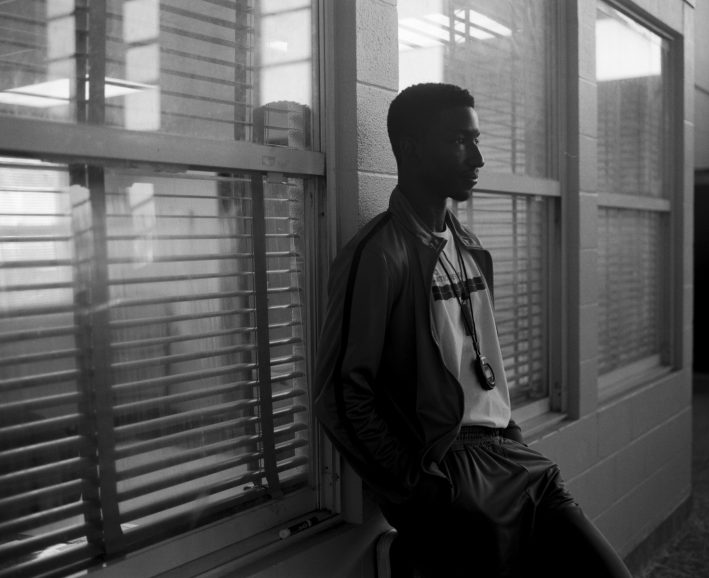
“Yorgos loves shooting black-and-white and wanted to try to incorporate it somewhere in this film, feeling the dreams or flashbacks were well suited to being monochrome,” says Ryan, who also highlights the role of dailies colourist Greg Curry as important during the process.
Greg Fisher from Company 3 created a LUT for the colour dailies and one for the black-and-white which Curry at FotoKem then used as a basis for his work.
“It was the first time Yorgos and I created a show LUT and I was really impressed with the dailies when working this way. We’ve always been told that was the way you should do it and when we did it was a revelation,” says Ryan.
During the final grade, Fisher gradually added more contrast and colour than he had initially planned. “It feels like it has become quite normal to see flat, desaturated images, it can now be surprising when you see in a good print how much contrast can be squished into [cinema projection spec] 14 foot-lamberts.”
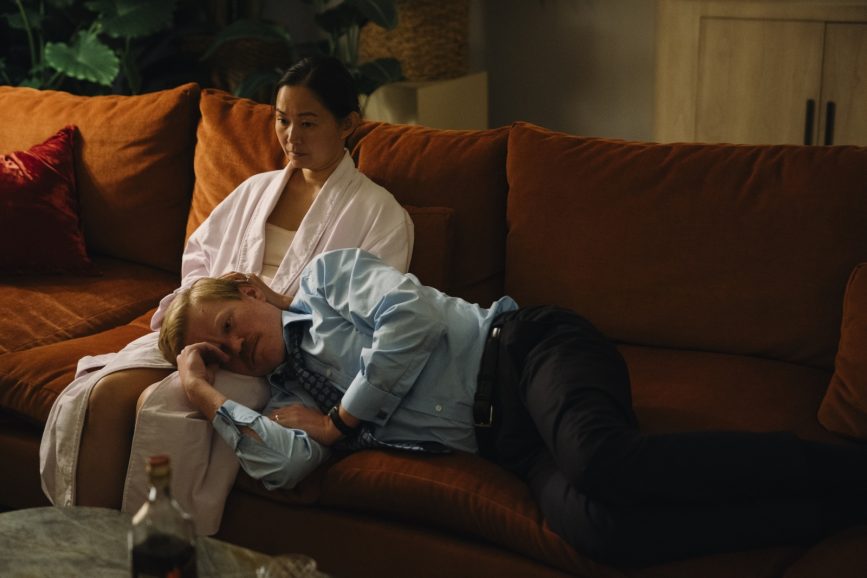
Cinematographic sensibilities
Lanthimos always has a strong visual concept in mind from every film’s inception and “cinematographic sensibilities that are way better than some cinematographers”, according to Ryan. Also aiming to adopt a practical way of working, the director wanted to avoid using a different camera system for each of the three stories and sought to move away from the style of Poor Things through a simpler widescreen and anamorphic visual approach, resetting whilst building on what they had created before.
“Since we were going to film in a contemporary world, with these three stories, we were going for simplicity as much as we could,” says Lanthimos. “It was about finding the simplest way of covering a scene and focusing on its true essence.”
As Ryan considers shooting anamorphic “a different sensibility”, finding the most appropriate lenses to fulfil their visual goals required extensive testing at Panavision in New Orleans. They discovered a softness appears at the top and bottom when shooting with many anamorphic lenses, especially the wider ones. “Yorgos didn’t like that and wanted clarity all around the image which the Panavision Primo Anamorphic offered,” says Ryan. “They’re older lenses from the 1980s and not as popular now as they ‘re quite big and also have a slight blue flair, but we worked around that.”
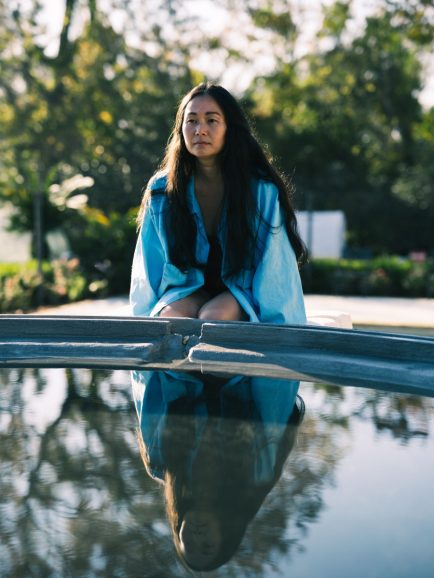
Wanting to work with the widest lenses available in the set, the filmmakers shot with the 35mm all the way up to 100mm. “As Yorgos likes a wider lens approach, we also used the 25mm Cooke anamorphic and a 21mm Atlas anamorphic which Panavision recommended as being one of the closest to their lenses,” says Ryan. “Anamorphics are notoriously not very good at close focus, so Dan Sasaki at Panavision also made us some special 10mm and 6mm lenses to offer extremely close focus.”
Select shots were captured with a 10mm and 6mm spherical lens and a 6mm achieved a more distorted view of a character stepping on weighing scales. “We got wider and wider on the last story to be more expansive and start getting into the bend on the Atlas 21mm,” adds Ryan.
The camera package included the Arricam ST – used most frequently as Lanthimos has a propensity for shooting single camera – and the lighter Arricam LT for handheld and as a backup camera. Always aiming to keep the story moving, Lanthimos sometimes gave crew additional information relating to camera movement on the day. “He doesn’t love Steadicam, so we often pushed the dolly around and used the vibration isolator to reduce unwanted vibrations,” says Ryan. “I love doing that because I’m still operating. And we were able to use that a lot as key grip Sean Devine did a great job keeping up with those sorts of moves. We also did quite a lot of long tracks of characters walking which was all dolly and track rather than relying on Steadicam.”
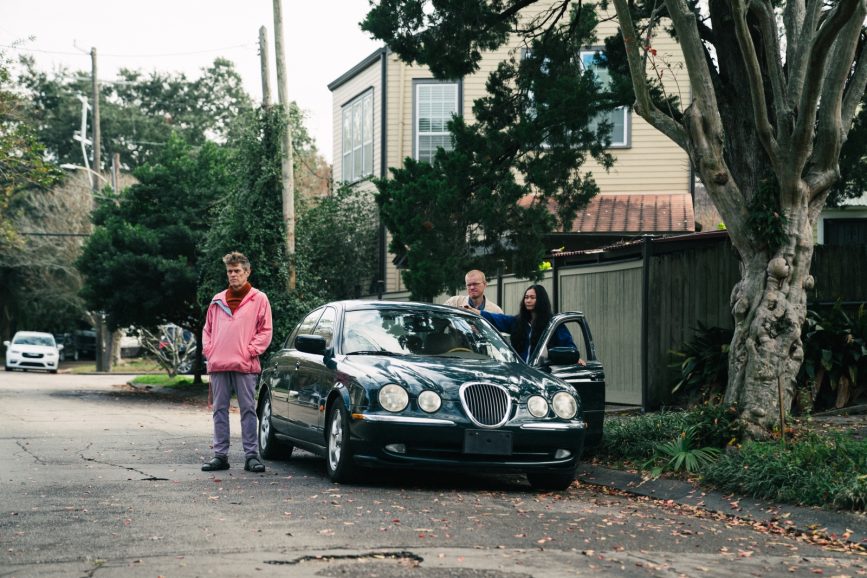
Car-related sequences were achieved using a variety of techniques including attaching a camera to a vehicle driven by precision drivers and followed by another car carrying Lanthimos, Ryan, and focus puller Olga Abramson who also worked on Poor Things and Ryan considers a “core member of the team”. Other car scenes were filmed using a Biscuit Rig set-up in which the car sits on a low loader and a driver controls the car, meaning the actors do not have to. Elsewhere, a four-camera set-up was used to capture a car crash scene, shooting slow motion at around 150 frames per second on two Arriflex 435s alongside an Arricam LT and ST.
Occasionally, Lanthimos requested sequences be filmed handheld on the day when the lighter and more suitable for handheld LT was not prepared. “So sometimes I just walked with the bigger ST and made it work for shots such as in the first story when Jesse Plemons’ character steps out of the car after the crash,” says Ryan. “Part of the reason Yorgos and I get on is because I can react to whatever way he wants to shoot. I quite like the spontaneity of changing it up and seeing where you go. You just need to be attuned to get ready for any eventuality.”
The director is partial to low angles and sometimes incorporates shots where heads are cut off or moves between a wide to a tight shot where the focus is on a specific part of the body. The psychological impact of framing and composition choices was often at the forefront. For instance, a small push in could change the whole dynamic of how the audience views a character. “Yorgos is tuned into the way he wants the audience to think characters are dealing with a situation, and how the camera dictates that, so he’ll change the composition to suit,” says Ryan.
Lanthimos’ ability to know how shots will edit together while shooting dictates the composition. “He’s a real master editor in camera which is a great trait in a director,” adds Ryan. “Some filmmakers don’t think that way and just layer it up and let the edit work itself out.”

Consecutive capture
Shooting a project akin to filming three features in one 40-day shoot was an exciting activity made less daunting for Ryan by the stories being captured consecutively, helping the crew when shooting the same actors playing multiple characters.
While Lanthimos admits there were challenges such as time constraints, it was also a thrilling creative venture to explore. “With a feature film that only has one story, the audience can engage more actively because there is room to think about what is happening and apply your own logic,” he says. “With an anthology, you bring whatever you’ve been thinking about from the first story into the next. It is more complex and more engaging. Different people identify different themes, which is a hugely interesting structure.”
Whereas Poor Things was mainly filmed in the studio, Kinds of Kindness saw Ryan and Lanthimos return to location-based shooting. Rather than poring over reference material during prep, this period was largely dedicated to logistics due to the number of locations, props, and complex scenes involving cars. Ryan is fond of location shooting because it “limits what you can do which means you get creative” and he feels “more able to deal with that than if I have a whole studio where I can make it exactly what I want.”
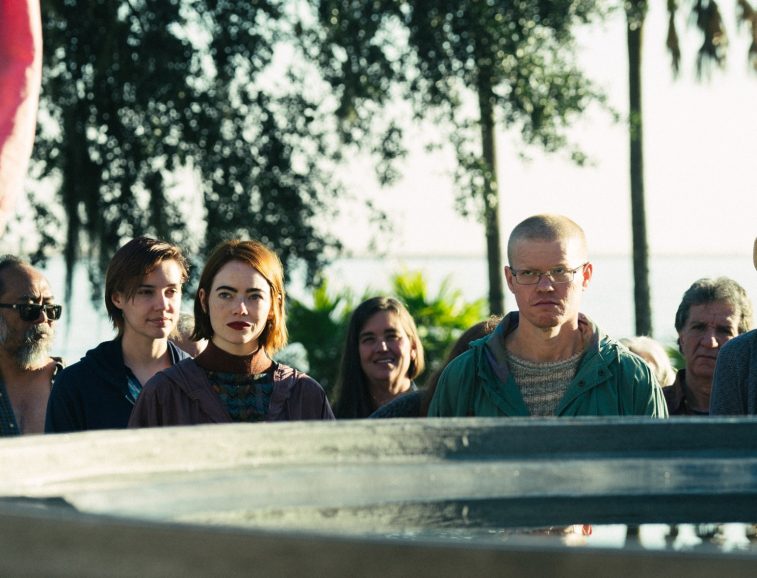
Lanthimos was equally excited to return to a simpler form of filmmaking that did not rely on studio builds and extensive lighting. “It was a huge weight off our shoulders, notwithstanding the other usual complications that come with filmmaking,” he says. “It felt good to be able to go around and look at locations, not having to think that things need to be built from scratch.”
But location shooting nevertheless brings with it certain challenges, especially due to the changeable weather conditions in New Orleans where the film was shot. A tornado even hit the building next to the morgue inside which the crew were shooting, causing quite a stir on the set but luckily causing no harm to cast or crew.
As each story within the film was technically demanding in different ways, Ryan initially examined the challenges each scenario presented. The first of the three stories needed to incorporate a car crash but also required the crew to film in the top floor an office block on a bright day. And as Lanthimos likes to shoot in a naturalistic way, it was difficult to match the brightness coming in from the window when filming in the office.
“But during the grade Greg Fisher from Company 3 did amazing work fixing things like that,” says Ryan. “He’s a great collaborator of Yorgos’ and his work on Poor Things was also really strong.”
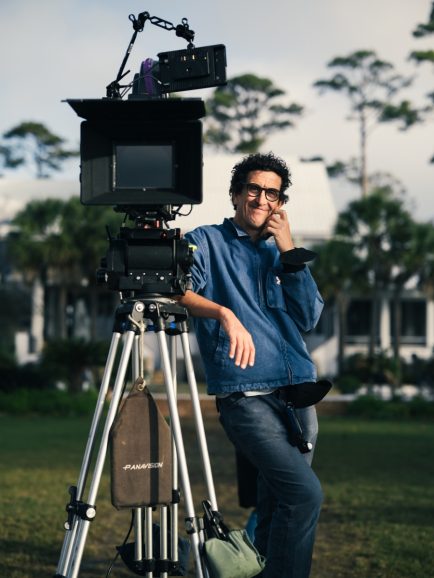
Fisher adds: “Company 3 doesn’t do film processing, so we tested three different labs to do the processing and scanning and ended up choosing FotoKem to do the processing and then the 4K scans with Scanity hardware.”
Like when making Poor Things, Ryan worked with Cinelab – with additional guidance from Fisher – to produce a 35mm print of Kinds of Kindness for select screenings of the film including some at Cannes Film Festival where the film world premiered in the main competition. “The colour science surrounding that process and trying to work with black-and-white is really interesting and something not many people know about,” says Ryan. “It might sound easy to record something out onto 35mm but it’s not.”
When exploring the best process to adopt to create a 35mm print of Poor Things, Fisher took into consideration the sizeable amount of black-and-white it featured. “It’s more straightforward when you’re doing colour and recording out onto neg, but there’s a real bias in the black-and-white. There’s a delicate balance to achieve so it’s not green,” adds Ryan. “So Greg came up with a technique based on what was used back in the early stages of DI in the 2000s and helped Cinelab during the process too.”
When Fisher came to film out to make a print for Poor Things, there was a lot of cross colour, particularly apparent in the black and white sections. “We tried recording to black-and-white interneg, but the lab couldn’t accommodate the major printer light changes that would have required,” he says. “Our Company 3 LA location managed to find an old characterisation for using the Arrilaser for this lab from about eight years ago and we gave that a try. The results were promising. I spent a while going back and forth adjusting the aims and Yorgos also got involved with tweaking the aims and eventually we got a good result. We essentially used the same process for Kinds of Kindness.”
Locations determined colour palette with certain settings such as the wooden cabin setting in which most of the second story is set thematically lending themselves to being warmer. “Yorgos loves a bit of colour and contrast and pushes it to this celluloid contrasty look more than other films,” adds Ryan.
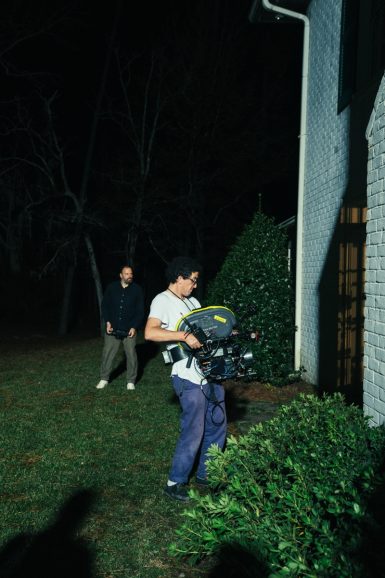
As the film is set in an anonymous American city, Lanthimos and the creative team wanted somewhere that could be a nameless city and blend into the background in an unobtrusive way – finding shooting on location in New Orleans offered the most suitable atmosphere and settings such as a lake house featured in the third story which needed to be indulgent but slightly distorted.
When adapting the lake house, production designer Anthony Gasparro created a backstory in his mind “that someone had built it in the late ‘80s or early ‘90s, and then they just left, and it was abandoned. Then, this cult came in and took over and repurposed it. It became this strange ceremonial house where they put all the good furniture to the side and kept adding in more bunk beds.”
Liking to adopt a naturalistic lighting approach meant many of Lanthimos and Ryan’s conversations with Gasparro revolved around how to incorporate practical light into locations. New Orleans gaffer Sergio Villegas and Ryan often used 2300 Kelvin lightbulbs to achieve a warmer look alongside a small lighting package comprising mainly HMIs and some LED fixtures such as the Rosco DMG SL1 Switch when needed. Ryan often turned to the Rosco DMG Dash as a “go-to quick light to throw in” if there was a change in light.
On the last day of the shoot Ryan collaborated with underwater cinematographer Pete Zuccarini to capture sequences in a swimming pool for flashbacks that feature in the third story. Filming underwater, Ryan admits, is a completely different process where “it almost goes into a slow motion sensibility”.
Zuccarini used a Panavision C-Series close focusing 40mm anamorphic lens behind a 230mm corrective dome port. The dome port allowed them to be wide and close to the subject but also forced them to recalibrate the focus marks for the focus puller.
“We worked in an old swimming pool with chalky walls. Any movement in the water released even more dust creating a soft creamy light with limited visibility. This excess diffusion made shooting big wides difficult so we opted to move in closer with a wide lens to retain texture on skin and feel intimate with the underwater memory shots,” says Zuccarini. “Yorgos and Robbie asked for the underwater camera to push slowly in and rotate around Emma’s face, revealing her different expressions as the scene unfolds. A neutrally buoyant camera allows for these moves to be quite delicate and close to her face.”
Capturing three features in the same shoot, complete with underwater adventures, was a significant logistical undertaking made more manageable thanks to efficient scheduling from members of the team such as first assistant director Hayley Williams. “What was also fantastic about making this film was we didn’t have much outside pressure. When Poor Things came out, there was a lot of talk about it but when we were shooting this it hadn’t been released yet, so it was nice to be able to make a film under the radar,” says Ryan.
“We had no knowledge of how Poor Things would be received, and I don’t think that would even matter on a Yorgos film because he’s not like that. But it felt nice and kind of chilled because we were doing all the VFX reviews for Poor Things while beginning shooting Kinds of Kindness. Now we’re prepping another feature, and dovetailing it all has been a very enjoyable and exciting process.”
